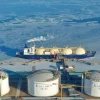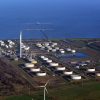Exclusive report: Reza Edalatipour
The current trends in the global energy economy do not align with past predictions; the return of Trump to the White House, fluctuations in oil and gas prices, and the direction of renewable energies have created new equations in this field.
As we enter the sixth month of 2025, it has become clear that many aspects of the energy economy have not progressed according to the forecasts made at the beginning of this decade; the return of Donald Trump to the White House, the ongoing war between Ukraine and Russia, the uncertain fate of Gaza, the fervor of climate decision-making at United Nations conventions, and of course the recent negotiations between Iran and the United States have led analyses to shift toward outcomes different from previous predictions and seek new results.
The transformation in White House policies since last winter alone has become a factor that has almost sidelined the hard aspect of war and military conflicts, focusing most attention on geopolitical tensions and economic disputes.
The United States once introduced the concept of the Cold War, bringing itself and many countries into a different sphere, and now Trump intends to direct this competition through a tariff war against China and other economic rivals.
Companies active in the energy and natural resources sectors must continue on their path amid the confusion surrounding the current developments. These economic actors must decide how to allocate their investments and choose between options such as traditional fossil fuels and low-carbon energies.
Over the past 18 months, these companies have made heavy investments in mergers and acquisitions of new economic resources, and current analyses suggest the continuation of this trend in the oil sector and possibly in mining. In this context, severe fluctuations in the prices of basic commodities are predicted, which may intensify further if tariffs are imposed and the trade war continues.
The current confusion in the energy sector has even spread to electricity, which is the main energy supplier for artificial intelligence processing and will receive more attention than ever in 2025.
Many key players in this market intend to make significant changes in their consumption approaches and move towards alternative energies. However, the main question now relates to the opportunities, challenges, and risks facing the energy and natural resources sector in 2025.
The World Economic Forum and Wood Mackenzie, as two of the most prominent institutions analyzing data on renewable energies and natural resources, have tried to provide an updated analysis over the past five months to answer this fundamental question: in which direction are the trends in the energy market heading?
Implications of Trump’s Return for the Energy Economy
In his second term, Trump has specifically focused on global trade, climate policies, and geopolitics; an approach that can have profound implications for energy and natural resources.
The performance of Trump’s second administration in recent months clearly shows that current U.S. policies will overshadow global economic growth in 2025.
While the average global GDP growth rate in 2024 reached 2.7%, it is predicted that Trump’s new approach will raise it to 3%. However, the imposition of tariffs by the U.S. and serious responses from Washington’s trade partners could ultimately reduce GDP growth by half a percent; a factor that could negatively affect demand for basic commodities.
The clearest example in this discussion could be a possible global oil demand reduction of about 500,000 barrels per day, equal to half of the annual growth in this sector. The tariff war is only part of Trump’s recent decisions, and another important issue is the U.S. withdrawal from the Paris Agreement.
Since 2015, greenhouse gas emissions have followed an increasing trend, and none of the major countries are currently on track to reduce emissions by 2030. Less than six months remain until the Brazil summit, and with the current U.S. approach, there seems to be no news of a two-degree temperature reduction.
Energy prices, especially gas, continue to rise amid the ongoing Russia-Ukraine war, and no clear future can be predicted for them. On the other hand, the U.S. is trying to end this conflict, and Russia has shown signs of willingness for peace. The World Economic Forum, considering the history of military conflicts worldwide, has predicted that a reduction in military activities could eventually lead to decreased trade frictions, but it is still unclear whether European policymakers will continue their previous patterns of gas purchases and imports; an issue that could directly affect prices and potentially lead to their decrease.
Will the Paris Climate Agreement Goals Evaporate?
Wood Mackenzie Institute has predicted that investment in the energy and natural resources sector will reach a new record in the second half of 2025. Analyses, considering global inflation, point to costs exceeding $1.5 trillion, representing a 6% increase compared to 2024; this forecast particularly emphasizes investments in electricity and renewable energies.
Interestingly, despite the overall increase in total investments, the growth rate in this sector is about half of the expectations set at the beginning of the decade. In 2015, the share of investment in low-carbon energies such as renewables, hydrogen, and critical metals was 32%, but this figure rose significantly to 50% by 2021.
However, the important point in this area relates to the halt in increasing investments. If the main energy-producing countries do not raise their investment levels in low-carbon energies to around 60% by 2030, the goals of the Paris Agreement will effectively not be realized. This agreement, beyond its temperature reduction targets, could have a significant impact on combating the increased use of carbon-based and traditional energies.
Examining the Behavior of European and American Energy Giants
Current analyses indicate that demand for oil and gas will continue at the current pace into the next decade. However, oil and gas companies have prepared themselves since early 2023 for a slower transition period in energy sales.
In this regard, major American companies in this sector have decided to adopt a conservative approach, using their valuable shares and financial resources to acquire independent domestic U.S. companies; a decision that allows them to maintain their potential for increasing production and sales.
Now, an important question arises: when and how will European companies such as Shell, BP, and Equinor strengthen their upstream sectors? Wood Mackenzie specifically explains that the current expectation is that these companies will focus primarily on strengthening their finances to pursue merger options in 2026.
These companies plan to improve the quality of their assets and subsidiaries during the current year and will likely remove non-core resources and innovative companies from their agendas. However, low oil and gas prices could provide an opportunity for a European company to make a transformative deal this year—a chance that remains to be seen which option it will be.
A Volatile Year Predicted for Oil, Gas, and Metals Prices
OPEC+ started 2025 with a strategy to maintain prices and has so far achieved positive performance and relatively favorable feedback. However, this strategy will face significant challenges later in the year. Keeping Brent crude oil prices above $80 for the fourth consecutive year is already facing serious challenges. Meanwhile, strong supply from non-OPEC producers allows OPEC+ to continue allocating 6 million barrels per day to foreign markets.
The World Economic Forum expects that OPEC+ will not be able to increase its market share and that Brent prices will eventually fall to $70–75 per barrel. The situation for natural gas prices is quite different. Analyses predict volatility and price increases for natural gas in 2025, and with only three major LNG projects launching this year, the market is expected to have little room to reach new volumes in 2026.
Among metals, copper’s direction attracts much attention. Copper prices at the beginning of 2025 are 20% lower than the peak recorded in May 2024. Considering this, energy market experts believe that copper prices can be optimistic in both short and long terms. Currently, experts talk about an average price of $4.5 for copper, which is reasonable given the supply shortage against rising demand from the U.S. and China.
Electricity, Renewables, and a Year for Innovation Acceleration
For years, energy transmission infrastructure worldwide has been provided by traditional producers and sellers, creating significant resistance against renewables.
Currently, difficult licensing and grid connection processes in countries are among the main barriers to the rapid growth of renewable energies. Early signs, however, indicate that 2025 and its remaining six months could mark a new era for renewables.
Since 2022, Germany has implemented significant reforms in the renewable energy sector, with onshore wind energy increasing by 150%.
On the other hand, Trump and the U.S. have indicated that the licensing process will soon undergo structural reforms; reforms that began in 2023 with the approval of the Federal Energy Regulatory Commission and are expected to accelerate.
Despite all this, data centers and artificial intelligence currently constitute a large portion of electricity consumption in developed countries, raising serious concerns about whether consuming companies can gradually move away from traditional processes and replace their energy needs with renewable sources.
Summary
Analyses and forecasts by the World Economic Forum and data analysis institutes clearly show that much of the future of the energy market is tied to the fate of military and trade conflicts worldwide.
Resolving any of these challenges could lead to lower energy prices, but for now, a clear future cannot be predicted for any of them. However, data generally show a growing trend, especially in natural gas, which is moving beyond its natural flow.
Current global energy market trends cannot be considered without acknowledging OPEC’s resistance regarding oil prices, and a probable decline in Brent crude prices is expected. Solutions to counteract the negative impacts of such events have long been debated extensively.
On the other hand, renewable energies are the key to solving many of the challenges of the next six months to a year, and currently, to reach ideal conditions for their use, countries must focus primarily on implementation processes and creating the groundwork for utilizing these energies—processes that have so far limited the willingness to use such resources and require fundamental changes to shift approaches widely.






